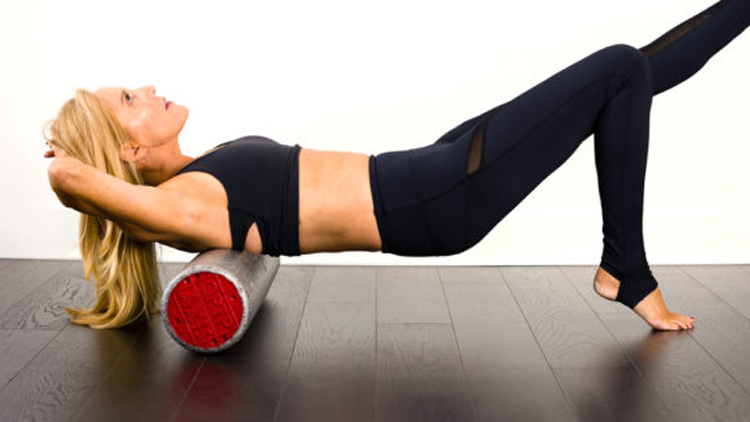7 Ways to Use a Rollology™ Roller
If you are still of a mind that foam rollers are for everyone else, then you are missing out on one of the most effective tools at your disposal for physique-building, recovery and injury prevention. Rollers are the most popular mechanism for self-myofascial release, or SMR, and are gaining popularity among elite athletes of all walks because of the drastic and usually immediate impact it has on their performance and overall health. Here are some of the most frequently discussed aspects of SMR as it pertains to dedicated lifters.
What the heck is self-myofascial release anyway?
Self-myofascial release is often called the “poor man’s massage.” Myofascial release is a hands-on technique that therapists have been using for years. To achieve this release, a therapist would apply a low load, long duration dragging force across layers of soft-tissue in the body. After a period of time, through some different mechanisms in the body, the body will “release” the tissue and mobility between those sliding surfaces is restored. To make these changes on oneself, a foam roller can be used in place of therapist’s hands. While the foam roller will never completely replace therapists, it serves as a great alternative.
What are the benefits of SMR for the everyday gym rat?
SMR can have a wide range of benefits for the everyday gym-goer. Some of the basic, most obvious benefits will be increased blood flow throughout the body, better movement and increased range of motion. These benefits can decrease the chance of injury and decrease recovery time after a workout. A decreased recovery time means more training sessions per week/month and results can come quicker. Increased circulation is huge for recovery and greater ROM means you get to work muscles more thoroughly on lifting days.
What are the most basic things you can do on the foam roller to start seeing performance benefits?
The first thing to do to start seeing results is to foam roll your calves. Most of the things we do negatively affect our calves. From the shoes we wear to the way we sit in a chair, our calves are in a shortened position most of the time. This limits the range of motion of the ankle and reduces function up the rest of the body. To address this, begin by placing one leg on the roller, then place the other leg on top of it. Raise the hips and slowly begin to roll to the knee. If you find an extra tender spot, stop and hold. After about 20 seconds continue to roll through the area four times. Then set the hips on the ground and rotate the leg four times side to side.
The second best thing is to foam roll the quadriceps. Again, from the things we do, this area can become shortened and affect the function of the hips and put additional stress on the low back. Begin by lying down in a plank position and place the GRID Roller just above the kneecap. Slowly roll down (about an inch per second) towards the hip. If you find a tender spot, stop and hold for about 20 seconds. Then resume the rolling. After four rolls, bend the knee 4 times. Make sure to breathe through all of the rolling.
The third best thing to do is foam roll the upper back, the thoracic spine. This area is designed for rotation and extension. With the postures most people are in, this area gets stuck. Begin by sitting on the ground and lay back to where the roller is just below the shoulder blades. Support your head with your hands and lean back into slight extension. Raise the hips and begin to roll towards the shoulders. Make sure not get pressure onto the neck. This area normally does not feel as tender as the others but if it does, again feel free to stop and hold pressure on one spot. Roll through the area of the spine four times with the hips up. Then, set the hips down and perform four crossfrictions, by mimicking an oblique crunch (side to side) with pressure on the roller.
When should SMR be done, ideally? Pre-workout as part of a dynamic warm-up? Post-workout? Both?
In a perfect world SMR would be done both before a workout as part of a dynamic warm-up and as part of a cool down. As part of the warm-up, it should be the first thing done, before any stretching or cardio. Here, it serves to get the blood flowing the areas that maybe aren’t receiving as much blood flow and helps to reduce tension in muscles. As part of a cool down, the rolling helps to flush out blood that has pooled in the working muscles and allows fresh nutrients and oxygen to come in and begin the healing process.
If one is limited with time (as most of us are) and can only choose one time to roll, pre-workout will get them the best results. For the benefits stated earlier, rolling for as little as five minutes before a workout can have a great impact on the quality of each training session.
Courtesy of Muscle & Fitness Magazine


